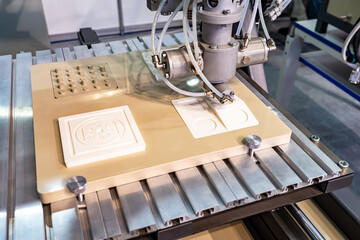When it comes to 3D printing, achieving a flawless and seamless finish is often the desired goal. However, the presence of supports, which are necessary for printing complex geometries, can sometimes leave behind visible marks or imperfections on the final print.
In order to overcome this challenge, post-processing methods play a crucial role in achieving a seamless integration of supports in 3D prints.
Here, we will explore various techniques and methods that can be employed to achieve a professional and refined finish.
Support Removal Techniques
One of the primary steps in post-processing is the removal of supports. Manual support removal involves using tools like pliers, tweezers, and knives to carefully detach the support structures from the printed object. This method requires precision and patience to ensure that the main print is not damaged in the process.
Alternatively, dissolvable support materials provide an effective solution for seamless support integration. These materials, such as PVA (Polyvinyl Alcohol), HIPS (High Impact Polystyrene), or BVOH (Butenediol Vinyl Alcohol Co-polymer), are designed to dissolve when exposed to specific solvents or water. By using a dual-extruder 3D printer or by manually inserting dissolvable supports during the printing process, the supports can be eliminated without leaving any trace behind.
Surface Finishing Methods
Once the supports have been removed, attention can be turned towards surface finishing.
Sanding and Polishing
Sanding and polishing are common techniques used to smooth out any rough surfaces or visible layer lines.
Different materials require different sanding techniques, and it is essential to start with coarser grit sandpaper and progress to finer grits for a polished finish. This process helps to create a uniform and smooth appearance on the entire surface of the print.
Chemical Smoothing
Chemical smoothing is another popular method for achieving a seamless finish. Various smoothing agents, such as acetone for ABS (Acrylonitrile Butadiene Styrene) prints or isopropyl alcohol for SLA (Stereolithography) prints, can be used to dissolve and blend the surface layers, resulting in a glossy and professional appearance.
However, it is important to follow safety precautions and work in a well-ventilated area when using chemical smoothing methods.
Filling and Patching
In some cases, after support removal and surface finishing, there may still be small gaps or imperfections on the print. To address this, gap filling materials can be used.
These fillers, such as epoxy putty, acrylic paste, or UV-curable resins, can be applied to fill in the gaps and create a smooth surface.
- After application, sanding can be done to blend the filler with the surrounding area, ensuring a seamless integration.
- Patching is another technique that can be employed to repair larger imperfections or holes. Using epoxy or resin, the damaged area can be filled and shaped to match the original surface. With careful sanding and blending, the patch becomes virtually undetectable, resulting in a flawless finish.
Paint and Coating Options
For a more refined and aesthetically pleasing print, painting and coating options are available. Priming the surface before painting is essential, as it creates a smooth base and enhances paint adhesion.
Primers are available in various types, such as spray-on or brush-on, and come in different colors to suit the desired final finish.
When it comes to painting, different types of paints, such as acrylics or enamels, can be used to achieve the desired appearance. Additionally, different finishes, like matte, satin, or gloss, can be chosen based on personal preference or project requirements.
Applying multiple coats and employing techniques like airbrushing or dry brushing can further enhance the quality of the paint job.
To protect the painted surface and add a layer of durability, clear coating can be applied. Clear coatings, such as varnish or lacquer, provide a protective layer while also giving the print a glossy finish.
This final step adds an extra level of professionalism to the print and helps to preserve the paintwork over time.
Seamless Integration
Post-processing methods for achieving seamless integration of supports in 3D prints are essential for obtaining high-quality results. From support removal techniques to surface finishing methods like sanding and chemical smoothing, filling and patching imperfections, and applying paints and coatings, each step contributes to creating a flawless and professional finish.
With ongoing advancements in materials and techniques, we can expect even more innovative post-processing methods in the future.



